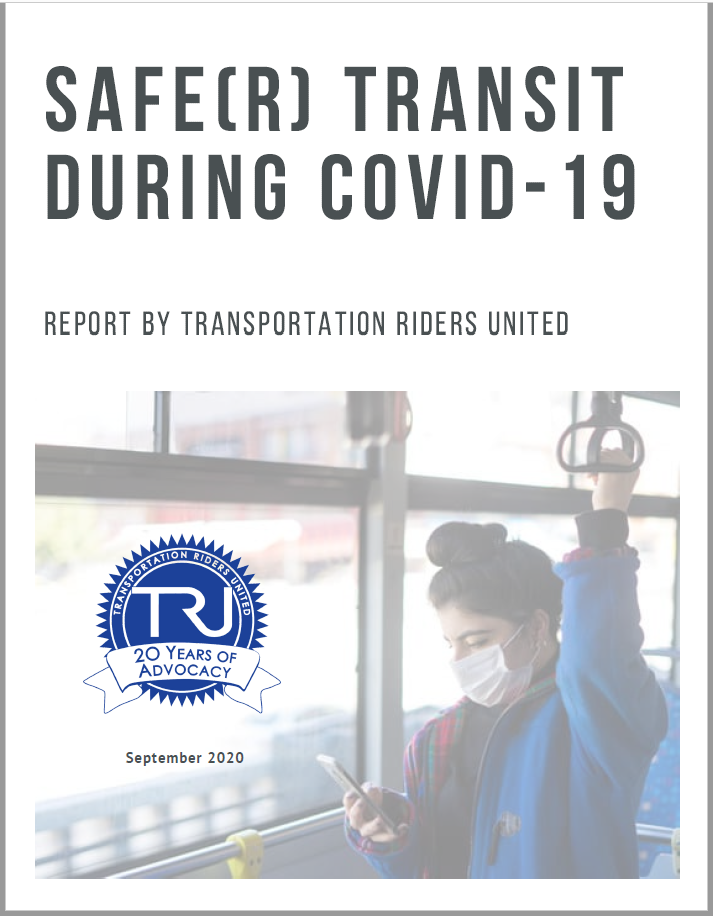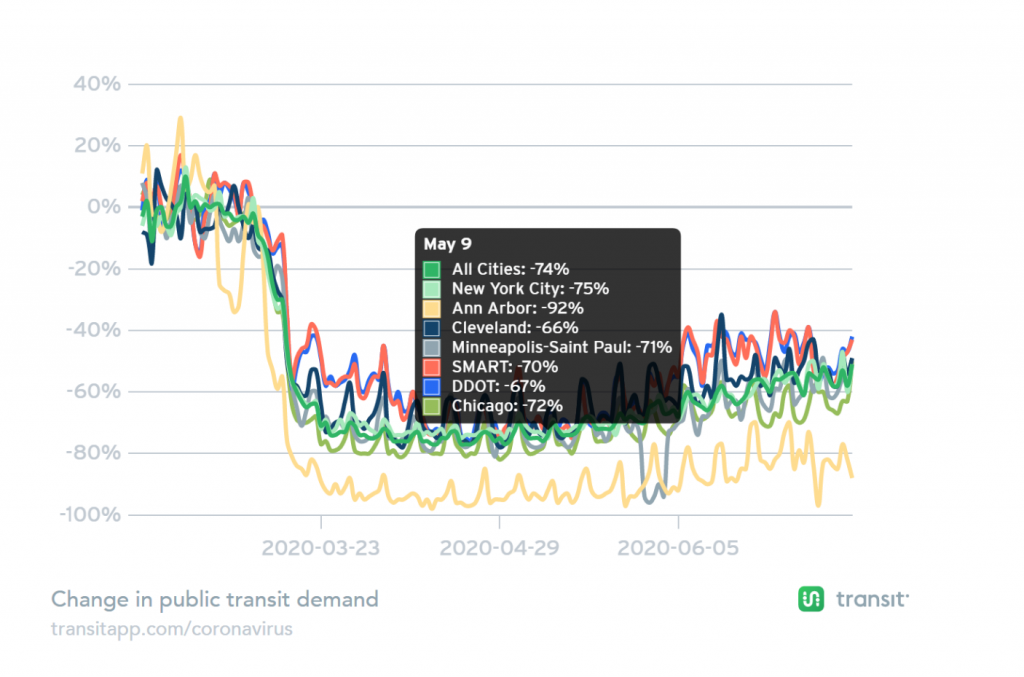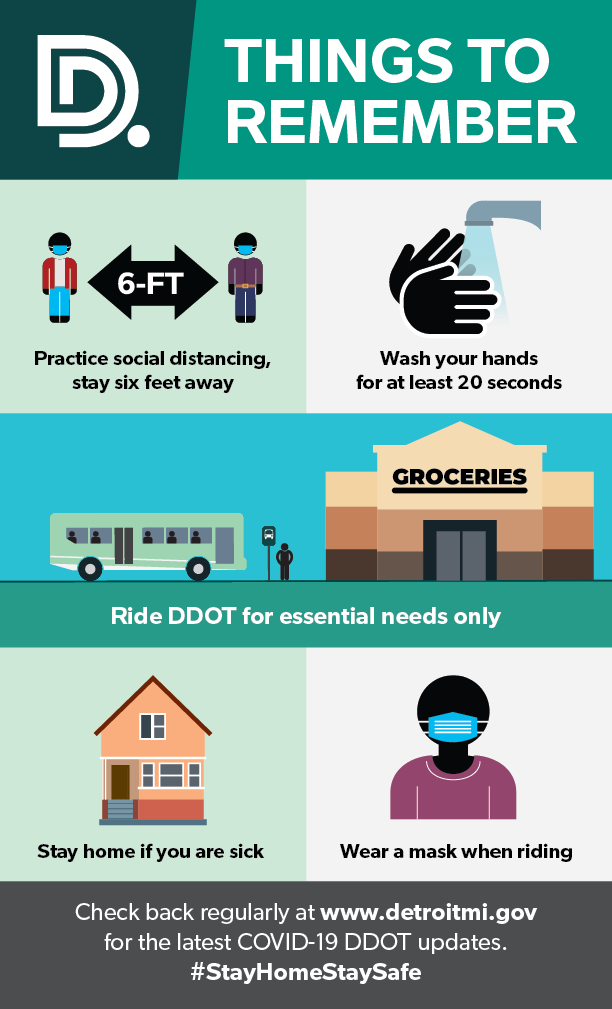
In March of 2020, COVID-19 turned Detroit and American society on its head, especially for public transportation.
TRU developed a special report to help the region understand how public transit was impacted by COVID-19, how agencies responded, who is impacted by these changes, and the best ways to minimize coronavirus transmission while maintain the bus service our community depends on.
We found that public transit can provide low-risk mobility even during COVID-19.
Download the full report – Safe(r) Transit During COVID-19 – or its Executive Summary.
TRU also hosted a Virtual Town Hall on the same topic in July featuring Detroit’s new Executive Director of Transit Mikel Oglesby and SMART’s Deputy General Manager Robert Cramer. You can watch the full video on Facebook or YouTube and read media analyses of the event in metromode and the Detroit Free Press.
COVID-19 turned Detroit and American society on its head, especially public transit.
While many people stayed home when COVID-19 struck, some couldn’t. Census records find that 36% of transit riders work in essential industries. Transit serves the nurses, janitors, grocery clerks, and pharmacy techs that keep our society functioning.

Transit ridership across the United States dropped roughly 75% during mid-March. Commuter services into downtown business districts dropped 90% or more, as did service in college towns like Ann Arbor. DDOT and SMART bus services saw their ridership drop around 70%. The QLINE and Detroit People Mover stopped operating all together.
A national survey by Transit App during the height of the pandemic found that 92% of people still using transit rode it to work. Of those, 20% worked in healthcare and 20% in food service.
Risk of COVID-19 Transmission on Transit Can be Kept Low.

Transit agencies locally and globally learned how to minimize the risk of coronavirus transmission on public transit and have diligently implemented those practices:
- Requiring masks, handing them out when possible
- Separating drivers by directing passengers to use the rear doors, not charging fares, and installing plexiglass barriers
- Enabling maximum airflow with open windows when possible
- Extra sanitation, like cleaning buses at the end of each run
- Avoid crowding and provide passengers as much space as possible.
DDOT and SMART quickly implemented most of these best practices. In fact, SMART was among the first in the nation to provide no-fare rear-door boarding upon recommendation from staff. DDOT has handed out more than 500,000 masks to passengers who need them. Riders report that the buses as cleaner than they had ever been before.
Unfortunately, DDOT has struggled to provide enough service. Despite a goal of no more than 15 riders per bus, infrequent service has meant risking overcrowded buses or leaving residents stranded without a ride. DDOT leadership recognizes this problem and are working to address it.
For the safety of riders and our broader community, DDOT must immediately provide enough bus service to ensure everyone can get where they need to go safely.
These safety measures proved to be effective.
There has been no evidence across the globe of public transit being a major source of COVID-19 transmission. Studies in Paris, Tokyo, Austria, and other places with extensive contact tracing found no infection clusters tied to public transit, despite active transit systems.
While no public activity is 100% safe, when agencies provide frequent enough bus service and everyone is consistent in wearing masks, public transit can be a low-risk way for Detroiters to get where they need to go.
This is critically important. Our nation and our region are facing an economic crisis too. Reliable bus service can be a lifeline for unemployed residents struggling with the high costs of cars and insurance, providing Detroit families the safe affordable access they need to weather this storm.
Transit can help metro Detroit and the nation build back better.